
How to Manage Multiple Cross-Border Accounts Safely with Cloud Phones
In today's fiercely competitive cross-border e-commerce arena, most sellers opt for operational management tools to …
Table of Contents
Cloud phone teams run into recurring issues when serving clients across regions, like dropped calls, blocked IPs, unreliable connections, and restrictions. These issues not only disrupt communication but also affect compliance and customer trust. However, a good proxy can help keep the connection stable, bypass geo-blocks, and secure sensitive call data.
The real challenge cloud phone teams face is knowing which type of proxy offers the right balance of reliability, speed, and flexibility for cloud-based phone systems. In this guide, we’ll break down the strengths, weaknesses, and use cases of mobile, residential, and datacenter proxies. You will also learn which proxy type is best for your cloud phone team and how to set it up in DuoPlus with Live Proxies. For larger teams, explore enterprise proxies to scale securely.
The first choice for most cloud phone operations is 5G/ 4G rotating proxies , since many communication apps expect connections to originate from cellular networks. Where the task in question is low risk and you are on a strict budget, residential proxies are ideal for a blend of legitimacy and affordability.
Datacenter proxies, however, are easier to detect and block. Cloud phone teams should therefore reserve them for non-sensitive and limited internal use cases.
This quick matrix will help to align your proxy choice with the task at hand:
| Use Case | Best Proxy Type | Risk Level | Rotation Style | Region Targeting | Quick Note |
|---|---|---|---|---|---|
| WhatsApp Support Lines | 4G/5G Mobile | Low | Sticky sessions (long) | Same country as users | Apps expect mobile footprints; minimize bans. |
| Social Account Ops | Residential | Medium | Moderate rotation | Target user markets | Balances authenticity with cost control. |
| Marketplace Testing | Datacenter (limited) | High | Frequent rotation | Broad/global | Fine for internal checks, but easy to flag externally. |
| ASO Tasks (App Store SEO) | Residential / Mobile | Medium–Low | Rotating pools | Region-specific stores | Match target app markets for visibility accuracy. |
| In-App QA (functional) | Mobile / Residential | Low | Sticky or session-based | Same as the app’s user base | Best way to replicate real user conditions. |
Live Proxies provides exclusive IP allocation, 10M+ global IPs, and 24/7 support, making it a reliable choice for both B2C and enterprise users. With options for rotating mobile, rotating static, and rotating residential proxies , teams can balance anonymity, speed, and stability for tasks ranging from app testing to multi-account management. Features like sticky sessions up to 60 minutes, unlimited concurrency, and easy integration ensure cloud phone teams stay connected without disruptions.
Mobile proxies frequently outperform residential or datacenter options because they mimic the exact environment apps were designed to operate in: real devices, real networks, and natural usage patterns. Mobile networks assign the same public IP to hundreds of users at once. This makes it almost impossible for an app to single out one proxy user, since the footprint is blended with real human traffic.
Cellular IPs rotate regularly as devices move between towers or reconnect. Mobile proxies mimic this behavior, so session changes look normal rather than suspicious. Apps like WhatsApp, Telegram, or ride-hailing platforms expect logins from phones on mobile carriers. Mobile proxies align perfectly with that expectation, reducing login challenges and bans. While typically more expensive than residential or datacenter options, the cost of mobile proxies can be minimized with the use of rotation windows and scheduling.
Here are the differences between mobile, residential, and datacenter proxies.
| Factor | Mobile Proxies (4G/5G) | Residential Proxies | Datacenter Proxies |
|---|---|---|---|
| Authenticity | Highest; true carrier IPs | High, tied to household ISPs | Low; server IPs, easy to spot |
| Detection Risk | Very Low; blended with carrier traffic | Medium; sometimes flagged as proxy ranges | High; often flagged quickly |
| Rotation Control | Natural tower/IP shifts, limited manual control | Flexible session or rotating pools | Full manual control, but artificial |
| Geo & Carrier Targeting | Carrier + region-level granularity | City/region level | Broad datacenter locations only |
| Speed & Stability | Moderate, varies with mobile signal | Good balance of speed & realism | Fastest and most stable |
| Price | Highest | Mid-range | Lowest |
| Best Cases | Messaging apps, sensitive logins, and mobile app QA | Social ops, ad verification, market research | Internal tests, scraping low-sensitivity data |
| Avoid When | Large-scale bulk tasks (costly) | High-sensitivity apps needing mobile footprints | Any consumer app expecting “real users” |
The cost of mobile proxies can be high. Therefore, use rotation windows and schedule only for tasks where trust is critical. Some ranges of residential proxies are reused, which can raise suspicion. So, ensure moderate IP rotation and diversify providers. Datacenter users may experience quick bans on consumer apps. You should therefore use it internally or for non-sensitive tasks.
Here are quirks to watch out for depending on the type of proxy in use.
DuoPlus makes it easy to integrate Live Proxies into your workflow. You can add proxies, assign them to devices, and keep traffic aligned with your app testing or account operations. Here are the steps to set up Live Proxies in DuoPlus.
Step 1: Get your Live Proxies details
Log in to Live Proxies and generate the proxy details to add to DuoPlus. This includes IP/host, port, username, and password. You can generate either individually or in batches.

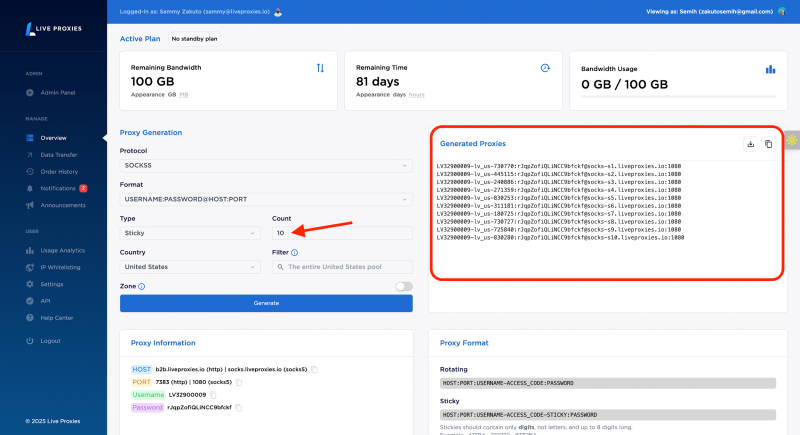
Step 2: Set Up DuoPlus
Head over to DuoPlus and create an account, then select a package based on specific needs.
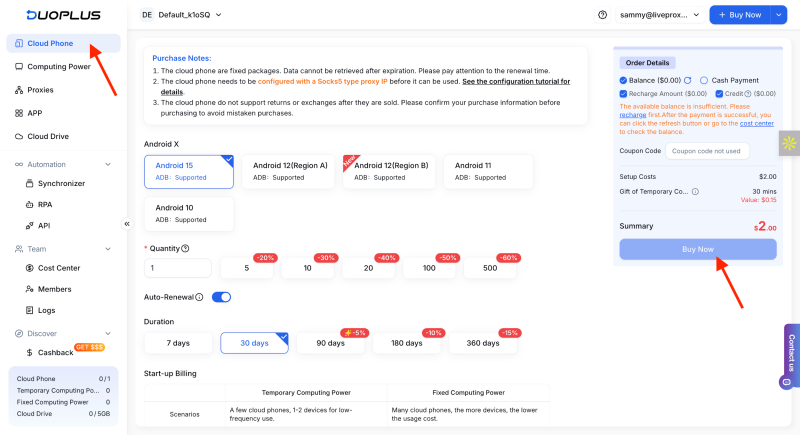
Step 3: Add Live Proxies to DuoPlus
Go to ‘Proxies,’ then ‘Custom Proxy.’ Select ‘Add’ to add the generated proxy individually or ‘Batch Add’ to add multiple proxies. You can also create a group. Click on ‘Check’ to remove duplicates.
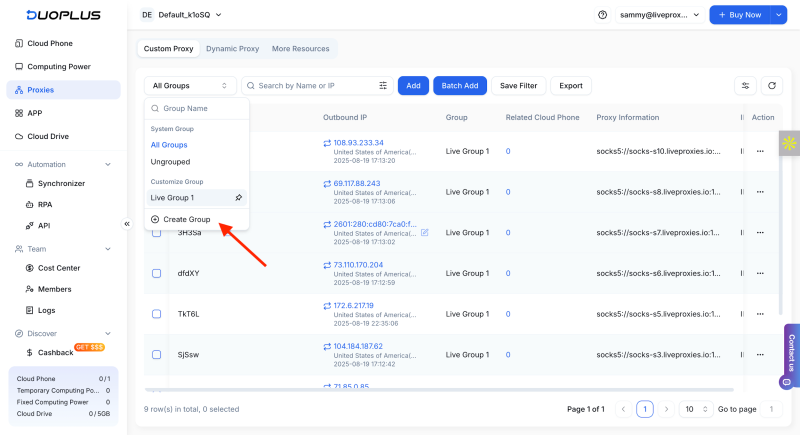
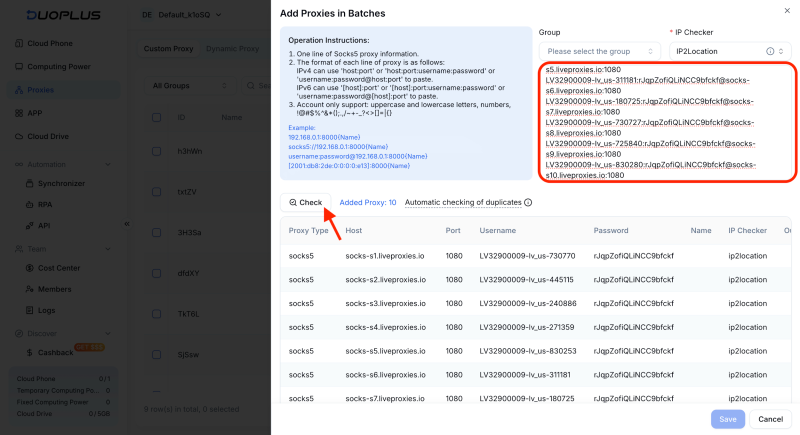
Step 4: Assign to a Cloud Phone
Go to the ‘Cloud Phone,’ and pick a phone showing ‘Proxy not configured.’ Click the prompt box and select your saved Live Proxy. Then complete the configuration.
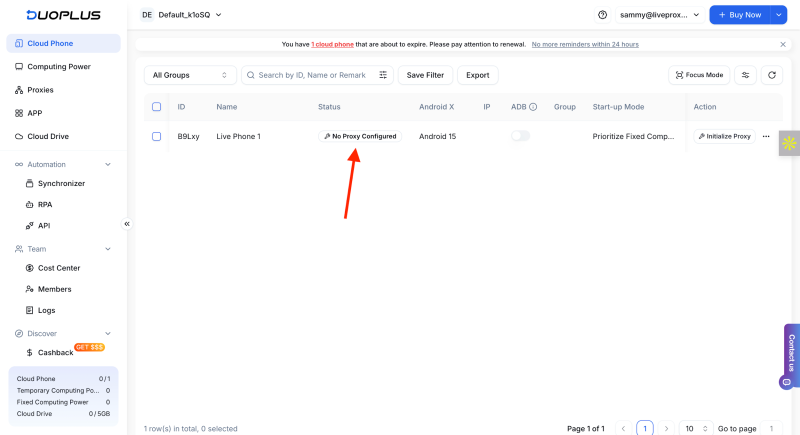
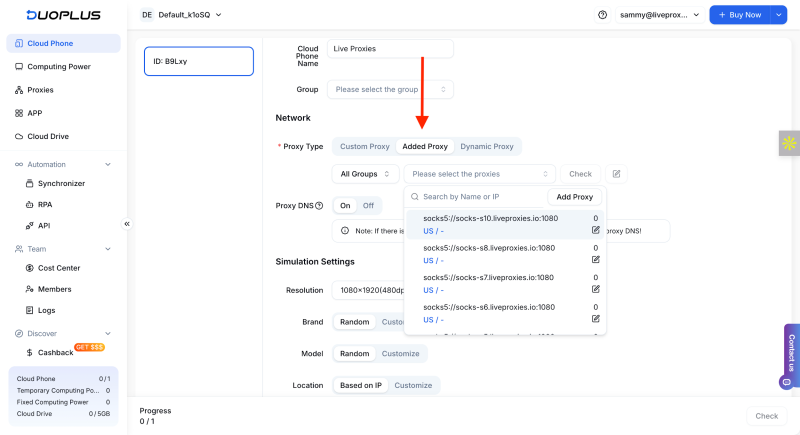
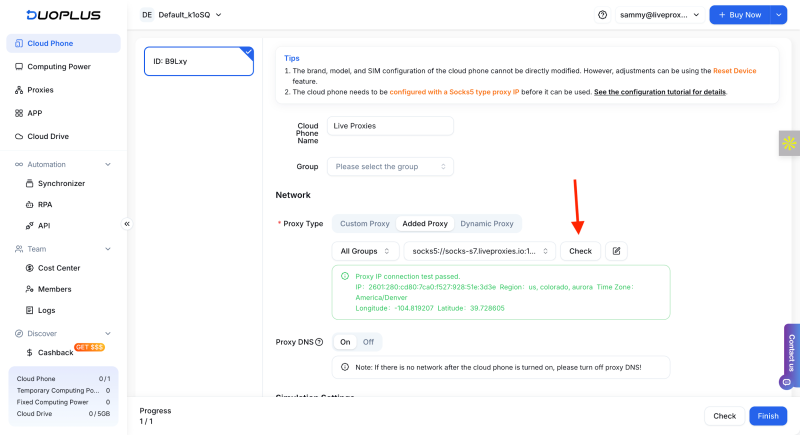
To add a single proxy in DuoPlus, sign in to access the DuoPlus home page.
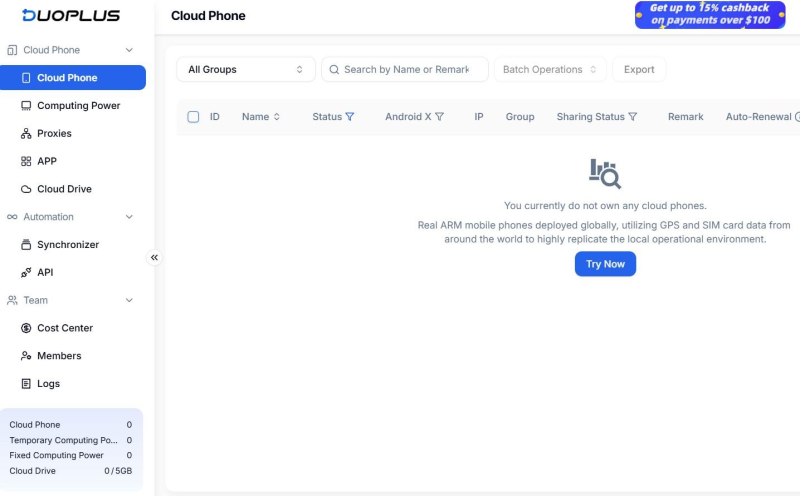
In the left-side menu, click on ‘Proxies,’ then ‘Custom Proxy.’ Click on the ‘Add’ button.

Fill out the proxy details after the ‘Add Proxy’ dialogue box appears. Check the proxy to ensure everything is working well. Click ‘Save’ to complete the setup.
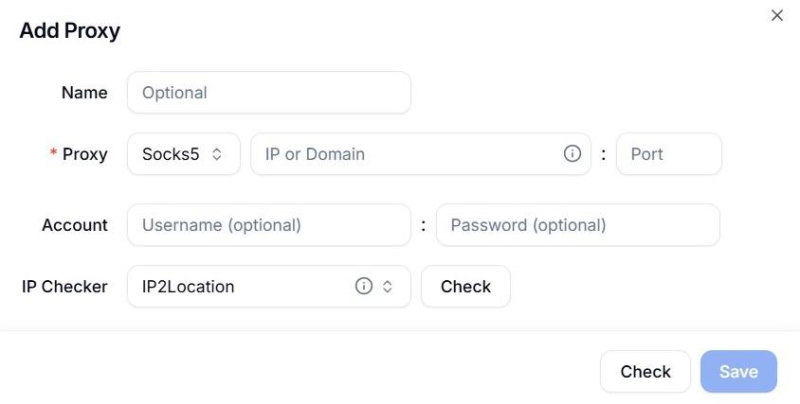
To add multiple proxies at once, follow these steps:
Once proxies are added to your pool, you can assign them directly to any cloud phone for trusted operations. Go to ‘Cloud Phones’ from the DuoPlus dashboard and select the phone showing ‘Proxy not configured.’ Pick the desired proxy from your saved list and confirm. Refresh the device session and run a check. A successful setup shows the new IP, region, and latency metrics.
Here are things to keep in mind when configuring to use Live Proxies with DuoPlus
DuoPlus only supports SOCKS5. This protocol is more flexible, supports mixed traffic types, and is more challenging for apps to fingerprint. Meanwhile, users can choose between rotating sessions or sticky sessions on DuoPlus. Rotating sessions change IPs frequently, while sticky sessions on Live Proxies keep the same IP for up to 60 minutes on residential plans and up to 30-60 minutes on mobile, depending on the plan.
The choice of session is determined by the task's duration and level of sensitivity. A sticky session is best for logins, payment flows, onboarding, or long-running actions, especially when paired with static residential proxies that maintain a stable IP identity. This session maintains the same IP for 10–30 minutes, which helps to ensure consistency so apps don’t flag sudden changes mid-session. Rotating IPs, on the other hand, change the IP address frequently and mimic real users. This is ideal for browsing, outreach, or bulk growth tasks.
You should adopt this structure when running multiple accounts across a team.
Proxies should be used responsibly and within the platform's terms of service.
Some common proxy issues you may face include fails on check, CAPTCHA, or flags and session drops. To resolve fails on check, ensure that the proxy formula is accurate, recheck the username and password, and confirm the IP is on your provider’s allowlist.
You can fix CAPTCHA or flag issues by slowing down request packing and running checks with a free proxy tester before scaling. Additionally, avoid over-rotation and check for unstable mobile signals to resolve session drops.
Here are vital things a proxy provider should provide.
When choosing a proxy type, ensure you match trust, needs, and workflow. Also consider the cost and pricing of proxy plans before making a final choice. Use the decision matrix as your quick reference, and follow the DuoPlus setup steps to configure and assign proxies cleanly.
DuoPlus Cloud Phone
Protect your multiple accounts from being

In today's fiercely competitive cross-border e-commerce arena, most sellers opt for operational management tools to …

Telegram has become the fastest-growing real-time communication platform globally. As a result, Telegram Bots have …
No need to purchase multiple real phones.
With DuoPlus, one person can operate numerous cloud phones and social media accounts from a single computer, driving traffic and boosting sales for you.
